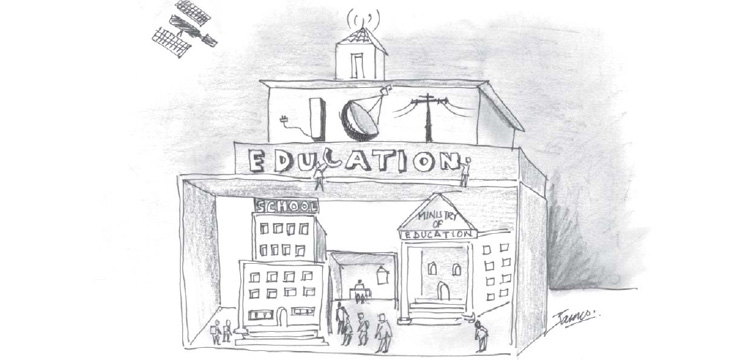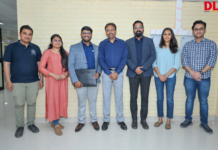
The advancement of Information and Communication Technologies (ICTs) is often described as the third revolution in the dissemination of knowledge and in the enhancement of instruction. The first revolution being the invention of written language and the second the development of movable type and books (The ICT in Education Tool kit for Policy makers, Planners and Practitioners, UNESCO Bangkok).
ICT is a powerful tool which has the potential to transform the educational opportunities and life chances of all students, including those who are normally excluded by virtue of their special circumstances and special educational needs. ICT can break down some of the barriers that lead to underachievement, student disaffection and educational exclusion. If used appropriately it can also improve the quality and consistency of instruction by providing an enabling environment for both students and teachers to access information and resources. However, technology must be the 'servant of educational practice and not its master' (Becta).
Why have an ICT in education policy?
 It is well-known that education development succeeds or fails on the basis of the nature and quality of educational policies and strategies and sound and sustained implementation practices. As rightly pointed out by UNESCO Bangkok, introducing ICTs into the teaching and learning process is an innovation often requiring radical change in the way in which schools operate.
It is well-known that education development succeeds or fails on the basis of the nature and quality of educational policies and strategies and sound and sustained implementation practices. As rightly pointed out by UNESCO Bangkok, introducing ICTs into the teaching and learning process is an innovation often requiring radical change in the way in which schools operate.
The provision of technology alone will not optimally harness the potential of ICTs to improve access, student achievement and the transformation of teaching and learning. To take full advantage of the different technologies and to direct their maximum use for the benefit of all students, there needs to be a clear framework which sets the scene and provides the enabling environment for technologies to be integrated, deployed and used to their fullest potential. The ICT in Education Policy can provide such a framework.
What is the purpose of an ICT in education policy?
A policy serves a political or organisational purpose in setting priorities and providing direction, guidelines and strategies to deal with a specific problem within the system. As such it encompasses the vision and provides an institutional master plan for what needs to be achieved within the overall political, economic and social context. While the policy serves a number of other purposes as well, the main purpose is to focus interventions on educational and learning objectives and on student needs and student achievement. In addition to student needs and student achievement, the policy can address the following issues:
-
provide clear political direction
-
set priorities for the sector e.g. with regard to needs, goals, levels, resources, timelines
-
provide a basis for better informed and improved decision making, and therefore a more strategic approach to a complex issue
-
provide a coherent framework for ICT interventions in education relating to curriculum integration, deployment of hardware and software, training of users at all levels, and standards to achieve systemic and institutional impact
-
map out how and where ICTs fit in the system and how they can be optimally utilised to address institutional needs and meet institutional requirements
-
highlight the benefits and challenges of ICTs and how to engage and deal with them in a systematic manner
-
prevent disjointed, uncoordinated, fragmented and wasteful purchase, deployment and use of ICTs.
Important considerations for a sound policy formulation process
From the work done by UNESCO Bangkok for the development of The ICT in Education Toolkit and from the experiences of a number of countries, the following elements are necessary to formulate a sound ICT in Education policy:
-
consultative and inclusive process bringing together key stakeholders to carefully consider the opportunities, challenges and implications of the intended policy
-
combination of top-down and bottom-up approaches taking into consideration the broader landscape and contextual factors while cognisant of the needs expressed at lower and decentralised levels
-
ownership by key stakeholders since they had participated in the formulation
-
country (and state) specific in nature with realistic and achievable targets.
The above elements illustrate the need to identify beforehand (and even during the process) who (e.g. groups, institutions) will participate in the process, what processes would be involved, what resources would be required, what information is already available and what is still lacking, and what the timelines are.





















